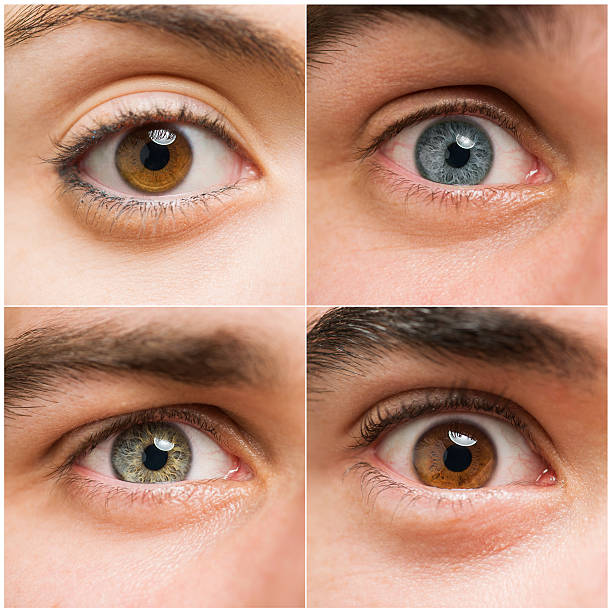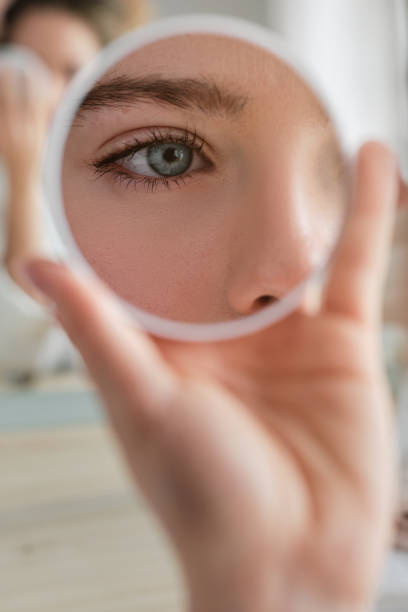Coșul tău este gol
What Can a Picture of Your Eye Tell You?

Unraveling the Secrets of the Iris: What Your Eyes Can Reveal
The human iris is a fascinating and intricate structure, revealing a wealth of information about our physical and emotional well-being. From the unique patterns and textures that make each iris distinct to the insights they can provide into our health and personality, the iris has long captivated the interest of artists, photographers, and researchers alike.
The Fascinating World of Iris Photography
The iris, the colored portion of the eye surrounding the pupil, has long been a subject of fascination for photographers and artists. With its intricate patterns, delicate textures, and mesmerizing colors, the iris offers a unique and visually stunning subject to capture. Iris photography has gained popularity in recent years, as more and more people discover the beauty and complexity of this remarkable feature of the human eye.
The art of iris photography allows us to explore the intricate details and unique characteristics of each individual's iris, revealing a world of beauty and complexity that often goes unnoticed in our daily lives. By capturing the iris in all its glory, photographers can create stunning works of art that not only showcase the visual appeal of the eye but also provide insights into the human condition.
Whether you're a seasoned photographer or simply an admirer of the human form, delving into the world of iris photography can be a rewarding and enlightening experience. It can open your eyes to the hidden wonders of the human body, and inspire you to see the world around you in a whole new light.
Anatomy of the Human Iris
The iris is a complex and dynamic structure, composed of a variety of tissues and structures that work together to control the amount of light entering the eye. The iris is made up of two main layers: the stroma, which contains the pigment-producing cells that give the iris its color, and the sphincter and dilator muscles, which control the size of the pupil.
The patterns and textures of the iris are determined by the arrangement and distribution of these various tissues and structures. Some individuals have smooth, uniform irises, while others have intricate, swirling patterns or distinct radial lines. These unique characteristics make each iris a one-of-a-kind feature, much like a fingerprint.
Understanding the anatomy of the iris not only helps us appreciate its visual beauty but also provides insights into its functional role in the human body. By studying the intricate structures that make up the iris, researchers can gain valuable knowledge about eye health, vision, and even potential links to other physiological processes.
Unique Patterns and Textures of the Iris
The iris is a veritable treasure trove of visual interest, with each individual's iris displaying a unique combination of patterns, textures, and colors. From delicate, lace-like fibers to bold, swirling designs, the iris is a true work of art, created by the intricate interplay of its various components.
Some of the most common and visually striking iris patterns include:
-
Radial Furrows: These are the distinct lines that radiate outward from the pupil, creating a spoke-like effect.
-
Crypts: These are small, irregular depressions or openings in the iris stroma, which can create a pitted or textured appearance.
-
Contraction Furrows: These are the concentric circles or waves that form as the iris contracts and dilates, responding to changes in light.
-
Pigment Dots: These are small, concentrated areas of pigment that can appear as distinct spots or freckles within the iris.
Exploring and understanding the unique patterns and textures of the iris can not only lead to stunning photographic and artistic interpretations but also provide insights into an individual's health and well-being. For example, certain iris patterns have been linked to conditions such as diabetes, high blood pressure, and even certain personality traits.
By studying the intricate details of the iris, we can unlock a wealth of information about ourselves and those around us, while also appreciating the sheer beauty and complexity of this remarkable feature of the human eye.
Capturing the Iris: Photography Techniques
Photographing the iris requires a delicate balance of technical skill and artistic vision. To capture the intricate details and mesmerizing beauty of the iris, photographers must employ a variety of specialized techniques and equipment.
One of the most important considerations in iris photography is the use of macro lenses or specialized macro photography setups. These lenses allow the photographer to get up close and personal with the iris, revealing its intricate patterns and textures in stunning detail. Additionally, the use of specialized lighting techniques, such as ring flashes or diffused lighting, can help to enhance the depth and clarity of the iris image.
Another key aspect of successful iris photography is the positioning and framing of the subject. Photographers must carefully position the camera and subject to ensure that the iris is the primary focus of the image, while also considering the overall composition and balance of the frame.
Mastering the art of iris photography requires patience, practice, and a keen eye for detail. By experimenting with different techniques and equipment, photographers can unlock the full potential of this captivating subject and create truly breathtaking works of art.
Lighting and Equipment for Iris Photography
Proper lighting is essential for capturing the true beauty and detail of the iris. Photographers often use a combination of natural and artificial lighting to achieve the desired results.
Some of the most effective lighting techniques for iris photography include:
-
Ring Flashes: These specialized flashes are designed to encircle the lens, providing even, shadowless illumination of the iris.
-
Diffused Lighting: Using soft, diffused light sources, such as reflectors or softboxes, can help to minimize harsh shadows and highlight the delicate textures of the iris.
-
Natural Lighting: Shooting in natural daylight can also produce stunning results, particularly when the subject is positioned near a window or in an evenly lit environment.
In addition to specialized lighting, iris photographers often rely on high-quality camera equipment, such as DSLR or mirrorless cameras with macro lenses, to capture the intricate details of the iris. Some photographers may also use specialized macro photography setups, such as extension tubes or bellows, to further enhance their ability to get up close and personal with their subjects.
Experimenting with different lighting techniques and equipment can help photographers unlock the full potential of iris photography, allowing them to capture the intricate details and vibrant colors of the iris in a way that truly showcases its beauty and complexity.
Post-Processing Techniques for Iris Images
Once the iris has been captured through photography, the real magic can begin in the post-processing stage. By utilizing a variety of digital editing tools and techniques, photographers can enhance the natural beauty of the iris, bring out its unique patterns and textures, and even create stunning, artistic interpretations.
Some of the most common post-processing techniques used in iris photography include:
-
Color Correction: Adjusting the color balance, saturation, and contrast of the image can help to make the iris colors pop and enhance the overall visual impact.
-
Sharpening and Detail Enhancement: Applying selective sharpening and detail enhancement techniques can help to bring out the intricate textures and patterns of the iris.
-
Selective Editing: Using masking and layer-based editing, photographers can isolate and enhance specific areas of the iris, such as the radial furrows or pigment dots.
-
Creative Filters and Effects: Applying artistic filters, overlays, or digital manipulations can transform a realistic iris image into a truly unique and visually striking work of art.
By combining technical expertise with a keen artistic eye, iris photographers can unlock the full potential of their images, creating breathtaking and captivating works that showcase the beauty and complexity of this remarkable feature of the human eye. Post-processing techniques can elevate iris photography to new heights, allowing artists to push the boundaries of what is possible and create truly unique and inspiring works of art.
Creating Artistic Interpretations of Iris Photos
Beyond the realm of realistic iris photography, many artists and photographers have embraced the iris as a source of inspiration for their creative endeavors. By experimenting with various mediums, techniques, and artistic styles, these visionaries have transformed the iris into a canvas for their own unique interpretations and expressions.
Some of the most popular artistic approaches to iris photography include:
-
Abstract Compositions: Focusing on the intricate patterns and textures of the iris, artists can create abstract, almost kaleidoscopic images that push the boundaries of traditional photography.
-
Surreal Manipulations: By combining iris imagery with digital editing techniques, artists can transport the viewer into fantastical, dreamlike realms, where the iris becomes a portal to the subconscious.
-
Painterly Interpretations: Using digital painting and drawing tools, artists can transform realistic iris photographs into vibrant, expressive works that blend the line between photography and fine art.
-
Collage and Mixed Media: Incorporating iris imagery into collages, mixed media pieces, and other experimental art forms can result in truly unique and visually striking works that challenge the viewer's perception of the iris.
The artistic possibilities are endless when it comes to exploring the iris through creative expression. By pushing the boundaries of traditional photography and embracing new and innovative techniques, artists can create works that not only captivate the eye but also inspire deeper contemplation and introspection.
Iris Art in Different Mediums
The iris has also found its way into a wide range of artistic mediums, from traditional painting and drawing to more contemporary forms of expression. By exploring the iris through different creative lenses, artists have been able to capture its essence in truly unique and captivating ways.
Some of the most popular artistic mediums for iris-inspired art include:
-
Painting: From oil and acrylic to watercolor and gouache, the iris has been a subject of fascination for painters, who have used the medium to explore the iris's intricate patterns and colors.
-
Drawing: Pencil, charcoal, and ink drawings have allowed artists to capture the delicate details and textures of the iris, often with a focus on the interplay of light and shadow.
-
Printmaking: Techniques such as linocut, etching, and screenprinting have enabled artists to create bold, graphic interpretations of the iris, often with a focus on its repeating patterns and shapes.
-
Sculpture: Three-dimensional interpretations of the iris, created through mediums like clay, metal, or glass, have allowed artists to explore the iris's form and volume in new and innovative ways.
Regardless of the medium, the iris has proven to be a rich source of inspiration for artists of all backgrounds and styles. By exploring the iris through different artistic lenses, we can gain a deeper appreciation for its beauty, complexity, and the profound impact it can have on our creative expression.
Showcasing Your Iris Artwork
Once you've created your own unique interpretation of the iris, whether through photography, painting, sculpture, or any other medium, it's time to share your work with the world. Showcasing your iris artwork can be a rewarding and fulfilling experience, allowing you to connect with others who share your passion for this captivating subject.
There are numerous ways to showcase your iris artwork, including turning your iris photos into custom art pieces:
-
Online Galleries and Portfolios: Platforms like ArtStation, Behance, and DeviantArt offer artists the opportunity to create online portfolios and share their work with a global audience.
-
Local Art Exhibitions and Shows: Many communities host regular art exhibitions and shows, providing a platform for local artists to showcase their work and connect with art enthusiasts in their area.
-
Social Media: Platforms like Instagram, Facebook, and Twitter can be powerful tools for sharing your iris artwork with a wider audience and engaging with fellow artists and art lovers.
-
Personal Websites and Blogs: Creating your own website or blog dedicated to your iris artwork can be an excellent way to showcase your work, share your creative process, and connect with potential collectors or clients.
By sharing your iris artwork with the world, you not only have the opportunity to inspire and captivate others but also to contribute to the rich tapestry of artistic expression that celebrates the beauty and complexity of the human eye.
Exploring the Symbolism and Meaning of Irises
Beyond their visual appeal, irises have long held symbolic and cultural significance in various societies and belief systems. From ancient mythology to modern literature and art, the iris has been a recurring motif, representing a diverse range of concepts and ideals.
In ancient Greek mythology, the iris was associated with the goddess Iris, who served as a messenger between the gods and mortals. The iris flower, with its vibrant colors and delicate petals, was believed to represent the path that Iris traveled between the heavens and the earth.
In Christianity, the iris has been used as a symbol of the Holy Trinity, with its three distinct petals representing the Father, Son, and Holy Spirit. The iris has also been associated with the Virgin Mary, symbolizing her purity and divine grace.
In the language of flowers, the iris is often associated with wisdom, valor, and admiration. Its striking appearance and resilience have made it a popular choice for floral arrangements and bouquets, representing the strength and beauty of the human spirit.
By exploring the symbolism and meaning of irises, we can gain a deeper appreciation for the cultural and historical significance of this remarkable feature of the human eye. Whether through artistic expression, literary works, or personal reflection, the iris continues to captivate and inspire, reminding us of the profound connections between the natural world and the human experience.
In conclusion, the iris is a true marvel of nature, offering a unique and captivating subject for artists, photographers, and researchers alike. From its intricate patterns and textures to its symbolic and cultural significance, the iris has proven to be a rich source of inspiration and exploration. By delving into the world of iris photography, art, and symbolism, we can gain a deeper appreciation for the beauty and complexity of the human eye, and unlock new insights into our own identities and experiences.




